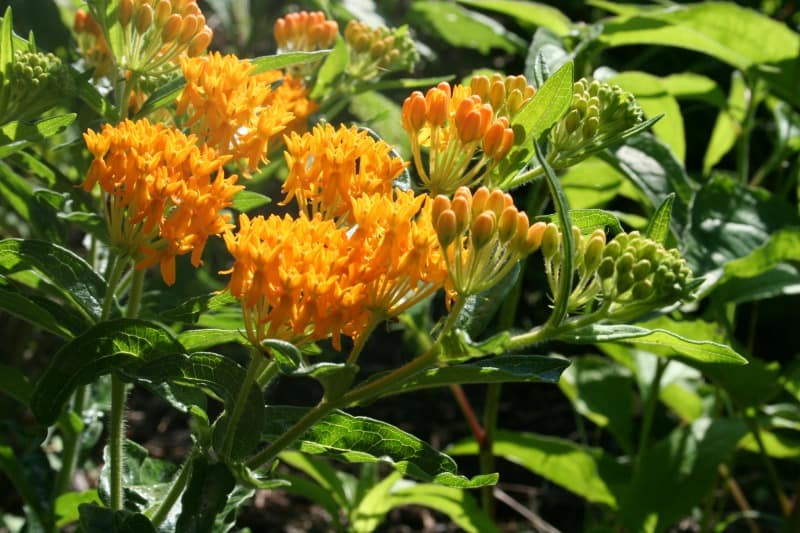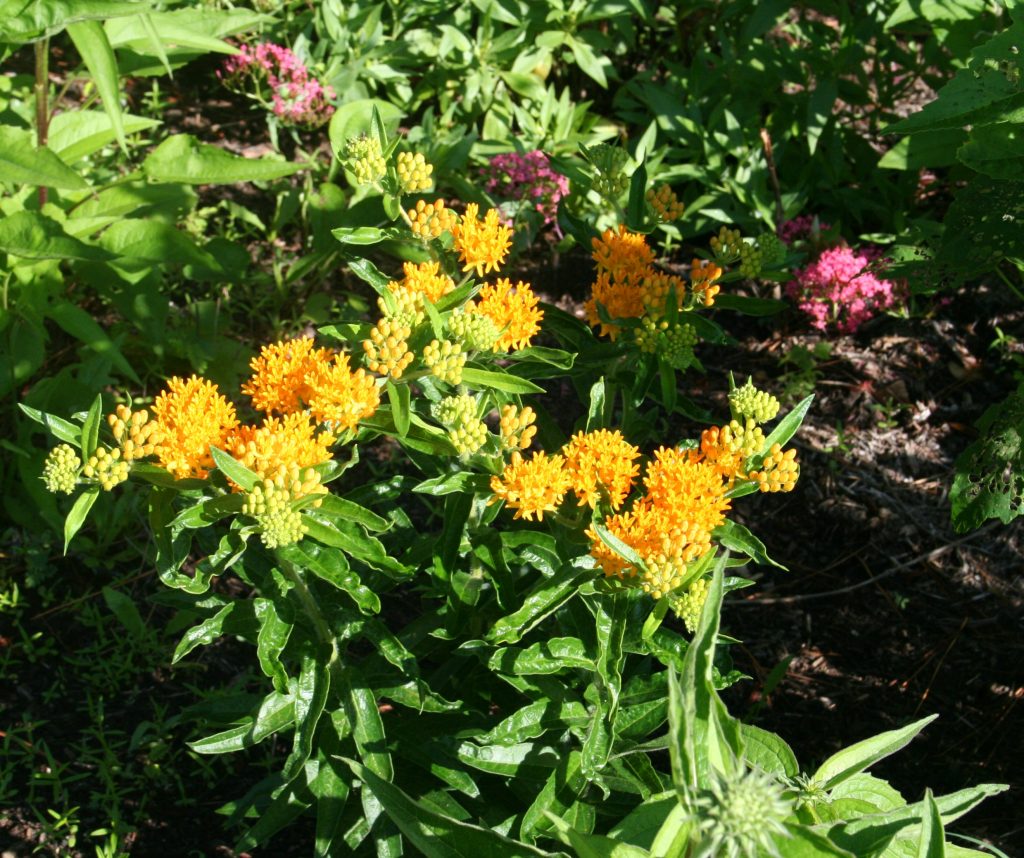I planted butterfly weed, Ascelpias tuberosa, last year, and thought it had died. But this plant is a strong native plant that thrives in almost all garden conditions. Nothing could hold it back, and this year it is rewarded me by joining the other perennials in the butterfly garden here at Seven Oaks Farm.
Planting Butterfly Weed or Asclepias Tuberosa
Butterfly weed, known by the botanical name Asclepias tuberosa, is a beautiful native perennial flower that can be hard to get started in the garden. But once it does get started, it’s tough as nails, and returns annually to support local butterfly populations – especially the Monarch butterfly.
I’m not sure why so many of us are fascinated by Monarch butterflies. Perhaps it’s the migration. The thought of millions of insects flying by pure instinct each year boggles the mind. How do they know where to go? How do they remember the route?
What do they do when mankind builds over the fields, meadows and forests that their ancestors have used for generations as rest stops along the way?
It’s like driving from Florida to New York, only to find that the highway department has removed all the off ramps AND the rest stops. Not only can’t you get gas or food, but where the heck are you going to go to the bathroom?
See the problem? All because we humans have to have our housing developments and new shopping malls and everything else we really don’t need…because we’re drowning in it already.
Okay, so I’ll get off my soap box and get back to this beautiful plant. It really is a beauty. The butterfly weed is poorly named. Yes, it grows like a weed, but the yellow, orange or red flowers are stunning.
Butterfly weed can be started from inexpensive seed packages, but be warned: it is hard to grow. Once the seedlings emerge, they must be tended carefully and watered well after transplanting into the garden.
During the first year, the plants won’t do much of anything. I was convinced that mine had died, and if I wasn’t such a lazy weeder, I’d probably have weeded them right out before the patch matured. Fortunately, all the rains this spring kept me from thoroughly weeding the butterfly garden, which gave the plants a good head start. They are also hidden in a thicket of cardinal flowers, which kept them from being weeded up as well.
Butterfly weed needs full sunlight, but it tolerates a wide range of soils including sandy, acidic and poorly drained soils. Here in Virginia, it’s not uncommon to see great swathes of Asclepias tuberosa, along with traditional milkweed, growing along the sides of the road.
The plants start blooming in late spring or early summer and continue until the fall. They support numerous native butterfly populations by providing both nectar and host plants for the young.
Because they are native plants, they offer an important food source for many butterflies who can’t live on non-native imports. Butterfly weed shouldn’t be confused with butterfly bush (Buddleia), an invasive Chinese plant that does attract butterflies but does not provide hosting materials for our native species. No, only native plants that evolved alongside the native insects provide the right conditions for their young to develop.
Butterfly weed grows well once it is established in the garden. It spreads, but isn’t aggressive like Butterfly Bush and won’t take over your entire yard. If you have a sunny spot in your garden, consider planting butterfly weed. The butterflies thank you.







I’ll have to look for this plant, does it grow in Central Fl on the west Coast? I planted a Monarch Butterfly garden last year and it’s been a joy. I’m always looking for new colorful plants that I can add to it!
Hi Wendi – it might grow in Florida but this one looks more promising for your climate: http://edis.ifas.ufl.edu/fp049
Good luck! Thanks for stopping by.
What a beautiful plant! Thanks for sharing at #HomeMattersParty. I’m enjoying co-hosting with you!
Omigosh- I thought that butterfly bush and butterfly weed were the same. Thanks for this important information, Jeanne! lol! I love your lazy weeder confession- I too suffer from that condition, but I just tell everyone that my it is English Country Garden style- lol! #HomeMattersParty
I can never get that to grow here in the mountains. Sure wish that I could, or find something comparable. #HomeMattersParty
Your butterfly weed is beautiful! #HomeMattersParty
What a pretty plant! Thanks for sharing – #HomeMattersParty
How pretty! Hopefully you will get some butterflies soon!